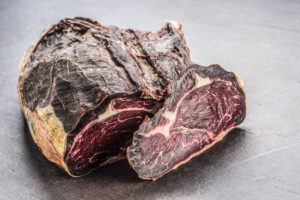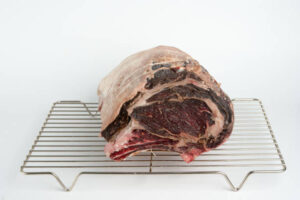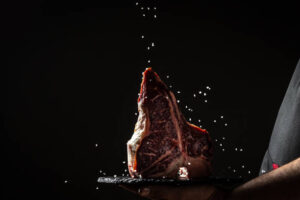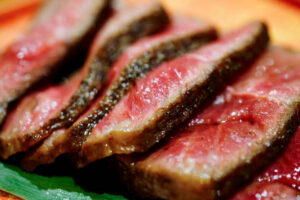
Welcome to a culinary journey through the flavors of Spain, where charcuterie boards are elevated to an art form with the inclusion of two iconic ingredients: Salchichón and Ibérico Ham. In this blog post, we’ll explore how to create a charcuterie board that celebrates the rich heritage and exquisite flavors of Spanish cuisine, featuring these beloved delicacies.
Exploring Essential Ingredients:
- Salchichón: This savory sausage is a staple of Spanish charcuterie, prized for its robust flavor and smooth texture. Made from a blend of pork, garlic, and spices, salchichón adds depth and complexity to any charcuterie board.
- Ibérico Ham (Jamón Ibérico): Considered the crown jewel of Spanish charcuterie, Ibérico Ham is renowned for its rich marbling, nutty flavor, and melt-in-your-mouth texture. Sliced thin and served at room temperature, it’s a true delicacy that epitomizes the essence of Spanish cuisine.
-
Spicy Gouda: offers a delightful twist on the classic Dutch favorite, boasting a creamy texture with a kick of heat. Made with aged Gouda and infused with spicy peppers or seasonings, it adds bold flavor to charcuterie boards, sandwiches, and cheese platters.”
- Marcona Almonds: These Spanish almonds are larger, softer, and sweeter than traditional almonds, adding a satisfying crunch and subtle sweetness to the board.
- Membrillo (Quince Paste): A traditional Spanish accompaniment, membrillo is a sweet paste made from quince fruit, providing a delightful contrast to the salty flavors of the meats and cheeses.
- Pan con Tomate (Tomato Bread): A simple yet delicious addition to any Spanish charcuterie board, pan con tomate features crusty bread rubbed with ripe tomatoes, olive oil, and garlic, adding freshness and texture to each bite.
Now that we have all the ingredients, It’s time to fill your board.
Tips for Presentation:
- Firstly, Arrange thinly sliced Ibérico ham in a fan-like pattern, allowing its marbled texture to shine.
- Pair salchichón with bold cheeses like Spicy Gouda to balance its savory flavor.
- Add pops of color and freshness with sliced tomatoes, grapes, and fresh herbs.
- Finally, Serve with crusty bread and a drizzle of extra virgin olive oil for an authentic Spanish touch.


















 ble.
ble.



 Choosing the Right Sides
Choosing the Right Sides
 u dinner. Choose instrumental music or genres like jazz, classical, or acoustic that won’t compete with the conversation. The right music can help set the tone and create a comfortable backdrop for your guests.
u dinner. Choose instrumental music or genres like jazz, classical, or acoustic that won’t compete with the conversation. The right music can help set the tone and create a comfortable backdrop for your guests.